Your ads will be inserted here by
Easy Plugin for AdSense.
Please go to the plugin admin page to
Paste your ad code OR
Suppress this ad slot.
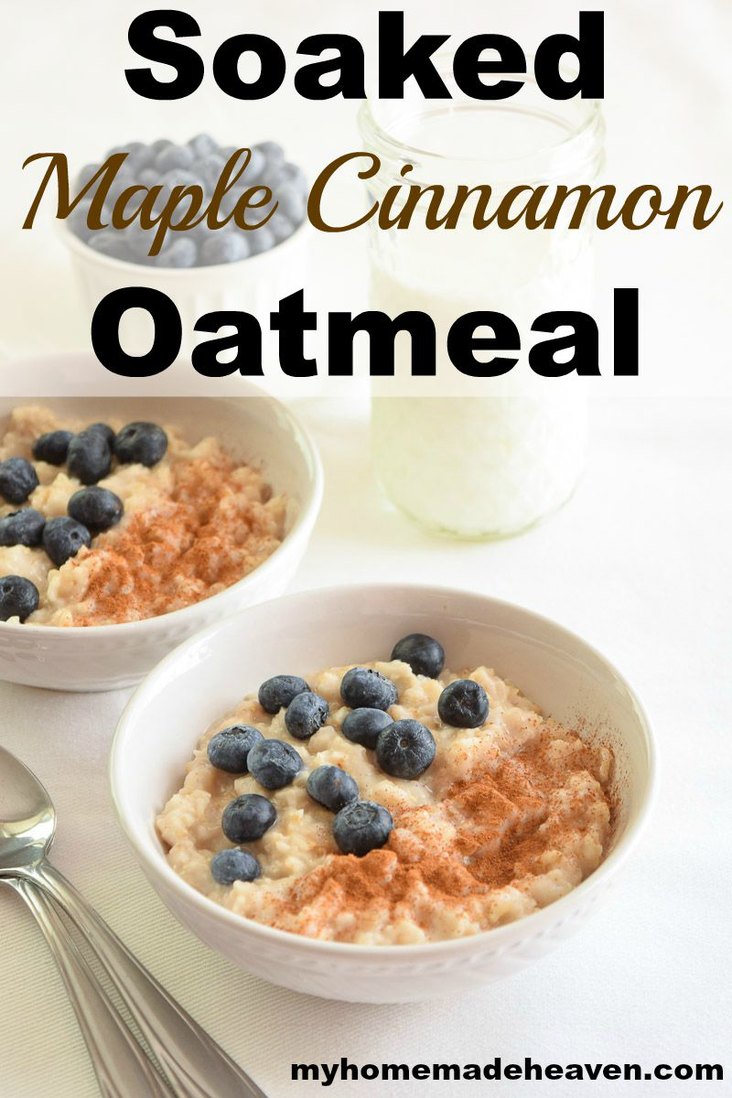
Oatmeal is a great powerhouse breakfast. When I lived in Norway, I ate oatmeal for nine months straight. Then I became so tired of it that I couldn’t even look at it…until two months later when I started eating it again…because lets face it, I was on a budget and there’s not much else that matches oatmeal in simplicity, health, and price. It’s also a great breakfast to warm you up on those chilly mornings…although in Norway they were more like, frigid mornings, -25 degree Celsius with frost on the inside of the window- type mornings. No joke.
Since getting home however, and moving from Sunny California to Lovely Utah, I have reincorporated the “warm breakfasts” as a way to stave off some of the cold during winter-time. I have also learned more about the health benefits of oatmeal over the past year, particularly oatmeal that is prepared properly through soaking. Why soaking, you may ask?
In the cookbook Nourishing Traditions , Sally Fallon explains the importance of soaking or fermenting our grains (like our ancestors did) before eating them. This is because all grains (and nuts) contain “phytic acid (an organic acid in which phosphorus is bound) in the outer layer or bran. Untreated phytic acid can combine with calcium, magnesium, copper, iron, and especially zinc in the intestinal tract and block their absorption.” In simple terms this means that unless we soak or ferment these grains to deactivate the phytic acid, we are not receiving all the nutritional benefits that they were meant to give us. They are instead absorbing nutrients from our bodies leading to “…mineral deficiencies and bone loss” over time.
Oats have an abundance of nutrients, and although they are lower in gluten, they also contain more phytates than almost any other grain. “The phytates are contained in the bran of the oat and can have a chelating or detoxifying effect. This is why the oat bran fad gave beneficial results at first; but frequent ingestion of un-soaked oat bran can lead to mineral losses, allergies, and irritation of the intestinal tract” Nourishing Traditions , 456).
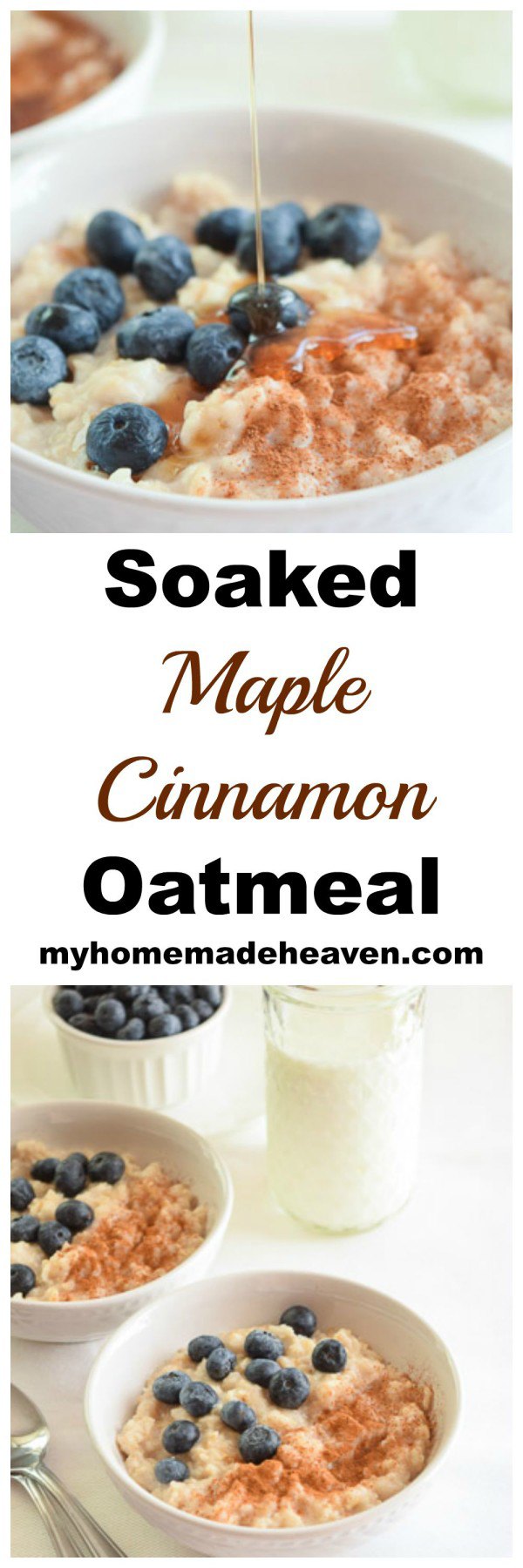
When speaking of oatmeal, Sally Fallon also shares an excerpt from Dr. Weston A. Price’s book Nutrition and Physical Degeneration. (Dr. Price was a dentist who travelled the world for 10 years in the early 1900’s with his wife, researching the healthiest groups of people. He wanted to know what they ate and how they lived that allowed them to be so healthy and to have such well developed facial structures and perfect teeth. He found amazing similarities in the things that they ate. One of them being that they all prepared their grains by soaking, sprouting or fermenting. The book Nutrition and Physical Degeneration is a compilation of what he found). So, back to our excerpt:
Dr. Price wrote, “The basic foods of these [isolated Gaelic] islanders are fish and oat products with a little barley. Oat grain is the one cereal which develops fairly readily and it provides the porridge and oatcakes which in many homes are eaten in some form regularly with each meal…An important and highly relished article of diet has been baked cod’s head stuffed with chopped cod’s liver and oatmeal…[in the ports the] hardy fisherwomen often toil from six in the morning to ten at night. [We saw] fisher people with teeth of unusual perfection…it would be difficult to find examples of womanhood combining a higher degree of physical perfection and more exalted ideals than these weather-hardened toilers. Theirs is a land of frequent gales, often sleet ridden or enshrouded in penetrating cold fogs. Life is full of meaning for characters that are developed to accept as everyday routine raging seas and piercing blizzards representing the accumulated fury of the treacherous North Atlantic. One marvels at their gentleness, refinement, and sweetness of character.”
Amazing that their diet consisted of mainly fish and oats and yet they had enough energy to last them for a 16-hour work day in the most strenuous and cold weather conditions. It has become so common place now days for us to expect to feel tired after eating, when in all actuality, food is suppose to give us energy and make our bodies strong and refined (like the islanders we just read about above, and numerous others Dr. Price found and wrote about). Rest assured that the food we have can still do that, but changes in how we prepare the food is important. We must learn how to prepare our food like our ancestors did. Our fast-paced days have brought about much of the processed foods and fast-food chains, and with it have brought all of the health issues that so many people struggle with today. Thankfully this knowledge of traditional food preparation is still with us, and it can be used to help us heal our bodies and/or avoid potential health issues down the road.
Your ads will be inserted here by
Easy Plugin for AdSense.
Please go to the plugin admin page to
Paste your ad code OR
Suppress this ad slot.
I hope you enjoy this recipe. There are so many great ways to add a variety of extra flavor to your oatmeal. For some fun and delicious recipe ideas of how to spruce up your oatmeal, check out Aloha.
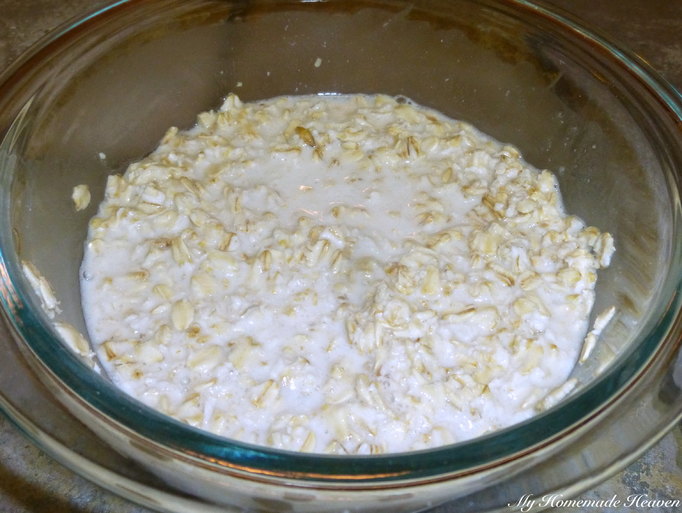
This is what the oatmeal should look like as you begin the soaking process.
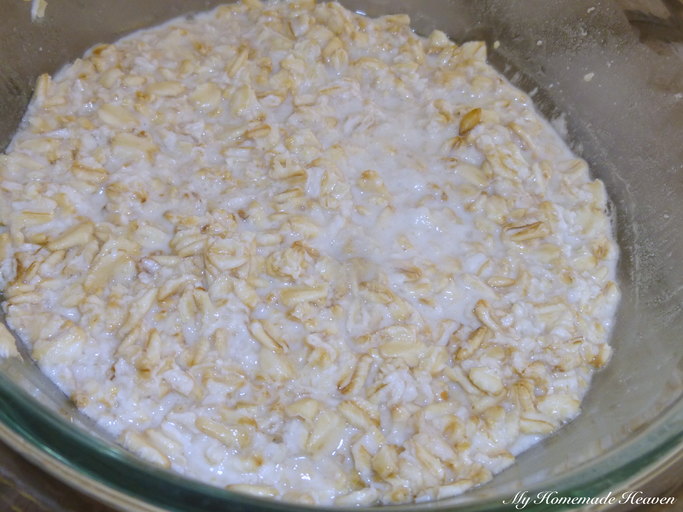
This is what it looks like after the soaking process (not much different).
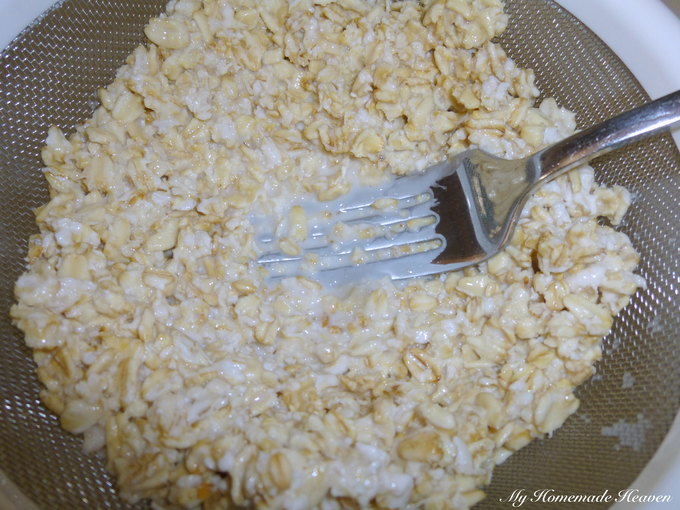
This is the optional straining process to drain the extra liquid before cooking.

And here you go! Top it with your favorite fresh fruit or nuts and enjoy!
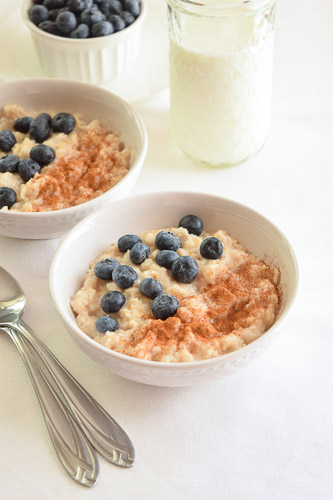

- 1 cup oats, rolled or cracked
- 1 cup warm filtered water plus 2 tablespoons whey, yoghurt, kefir or buttermilk
- 1/4 tsp sea salt
- 1 cup filtered water
- 1/4 teaspoon cinnamon
- 1 teaspoon flax seeds, freshly ground (optional)
- Maple syrup or other sweetener
- Mix oats with warm water mixture, cover and leave in a warm place for at least 7 hours and as long as 24 hours.
- After the oats have finished soaking, bring an additional 1 cup water to a boil with sea salt.
- (Optional Step) strain oats in a strainer and press with fork to get rid of extra liquid. I have found that this makes the oats less mushy, but they are still good both ways.
- Add cooked oats, reduce heat, cover and simmer for several minutes.
- Meanwhile grind optional flax seeds in a mini grinder.
- Remove from heat, stir in cinnamon and optional flax seed and let stand for a few minutes.
- Serve with plenty of butter or cream* and a natural sweetener like maple syrup, Rapadura, date sugar, or raw honey. You can also add milk or a milk substitute.
- *Adding butter or cream to these healthy porridges,"... allow fat-soluble activators [in natural butter or cream] to provide the necessary catalyst for mineral absorption" (Fallon, NT 454).

Leave a Reply